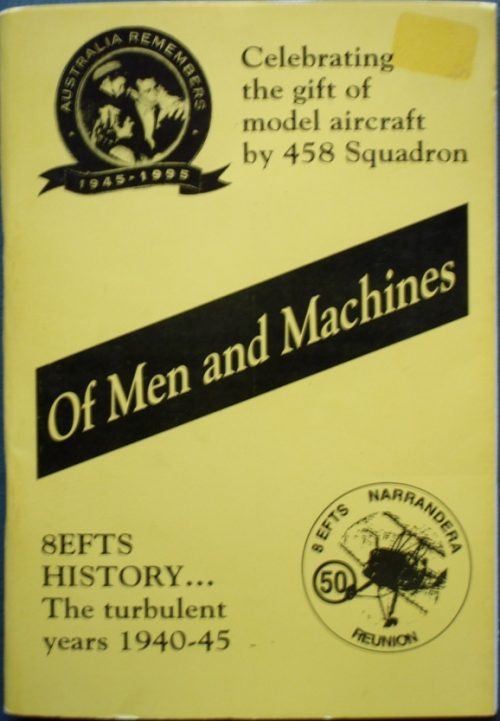Description
Title: Empire Airmen Strike Back – The Empire Air Training Scheme and 5SFTS, Uranquinty
Author: Ilbery, Peter
Condition: Near Mint
Edition: 1st Edition
Publication Date: 1999
ISBN: 875593209
Cover: Hard Cover with Dust Jacket – 196 pages
Comments: The history of the No. 5 Service Flying Training School (5SFTS).
The Empire Air Training Scheme (EATS), was a massive, joint military aircrew training program created by the United Kingdom, Canada, Australia and New Zealand, during the Second World War.
It remains the single largest aviation training program in history and was responsible for training nearly half the pilots, navigators, bomb aimers, air gunners, wireless operators and flight engineers who served with the Royal Air Force (RAF), Royal Australian Air Force (RAAF), Royal Canadian Air Force (RCAF) and Royal New Zealand Air Force (RNZAF) during the war.
No. 5 Service Flying Training School (No. 5 SFTS) was a Royal Australian Air Force flight training unit of World War II. Its role was to provide intermediate and advanced flight training to new pilots as part of Australia’s contribution to the Empire Air Training Scheme. No. 5 SFTS was one of eight Service Flying Training Schools established by the RAAF to train aircrew during the war. It was formed at RAAF Station Uranquinty, New South Wales, in October 1941, and disbanded in February 1946. Its staff and equipment were employed to re-establish No. 1 Flying Training School, which transferred to RAAF Station Point Cook, Victoria, the following year.
No. 5 Service Flying Training School (No. 5 SFTS) was formed at RAAF Station Uranquinty, New South Wales, in October 1941, and came under the control of No. 2 Training Group. The unit’s inaugural commander was Group Captain Ulex Ewart, a graduate of the Royal Military College, Duntroon, who had been seconded to the Air Force and learnt to fly on the first cadet course at No. 1 Flying Training School in 1923. At the time of its formation, No. 5 SFTS had a strength of 792 personnel, who were responsible for training about 200 pilots. One of its original instructors was Flying Officer Bill Newton, later to be awarded the Victoria Cross for bombing raids in New Guinea. Following the outbreak of the Pacific War in December 1941, the school’s CAC Wirraway single-engined trainers were classified as Second Line (Reserve) aircraft in the defence of Australia.
No. 5 SFTS began flight training in February 1942 using 28 Wirraways. The unit grew over the next two years, and by early 1944 was operating 128 Wirraways, two de Havilland DH.84 Dragons, two de Havilland Moth Minors and a CAC Wackett. It typically graduated one course of pilots each month, although the wastage rate sometimes exceeded 40 per cent. Among its graduates was Len Waters, the first Australian Aboriginal military aviator, and the only one to serve as a fighter pilot in the RAAF during World War II. As a training facility, No. 5 SFTS regularly suffered flying accidents.
Forty-two of its students died during the war, an average of around one per month. A near miss involving more experienced pilots occurred at the school in December 1943, when aces Clive Caldwell and John Waddy, then instructors at No. 2 Operational Training Unit in Victoria, almost collided when they crossed paths during an aerobatics display over the base. The amount of flying conducted by No. 5 SFTS declined throughout 1945 and its aircraft were being prepared for long-term storage by November. In February 1946 No. 5 SFTS was disbanded and its personnel and equipment were used to re-establish No. 1 Flying Training School (No. 1 FTS), which had operated during the war as No. 1 Service Flying Training School before disbanding in 1944.
No. 1 FTS relocated to RAAF Station Point Cook in August 1947. No. 5 SFTS also spawned Care and Maintenance Unit (CMU) Uranquinty, to look after the surplus aircraft stored at the base. These were auctioned off in November 1948, and CMU was dissolved the following month.



